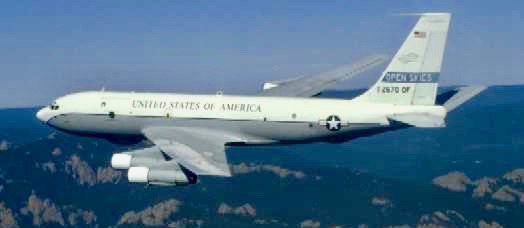How To Strengthen Alliances On President Trump’s Watch
Posted on

America’s Asian allies have been unnerved by President Donald Trump’s dismissive rhetoric about alliances based on cost/benefit grounds, and his decision to dump the Trans-Pacific Partnership trade agreement. That’s part of the reason Defense Secretary Jim Mattis traveled in Asia to calm nerves in Tokyo and Seoul. America’s European allies are also deeply unsettled by Trump’s bad-mouthing of NATO and inclination to view alliances as business transactions. Part of Mattis’s and Secretary of State Rex Tillerson’s job description is to help a president who shoots from the lip and whose understanding of geopolitics is skin deep.
Mattis’s domestic audience is no less important than his interactions with foreign leaders. Much of the American public could use a refresher course on the value of alliances. Alliances are one important way in which the United States separates itself from other major powers. Russia has Belarus. China has North Korea and Pakistan. The United States has alliance partners that span the globe. These partners benefit from U.S. defense ties, while Washington benefits from their geography, bases, expeditionary forces and military capabilities. Forward-deployed U.S. forces provide visible bonds of common purpose. It would be senseless to loosen these bonds at a time when Russia and China are flexing their muscles and when uncertainties abound about America’s direction. Backtracking would invite risk taking, and risk taking could invite crises and clashes, the outcome of which could alter power balances in Asia and Europe.
The Pentagon is already taking steps to reaffirm and strengthen the NATO alliance. It is rotating the presence of U.S. air, ground and sea-based forces in Europe. It is conducting bilateral and multilateral training exercises with allied forces. Military equipment is being prepositioned in the Baltics and elsewhere. Infrastructure is being improved. These and other measures are being carried out under the aegis of the Pentagon’s European Reassurance Initiative. The Obama administration requested $3.4 billion in fiscal 2017 for these initiatives – quadruple the funding for the previous fiscal year. One clear indicator of the Trump administration’s thinking and Congressional intentions toward NATO will be whether this $3.4 billion investment in collective security is slashed or increased. Follow the money, as well as Trump’s rhetoric.
Another step the Trump administration and the Congress can take to strengthen NATO is to recommit to the Open Skies Treaty first envisioned by President Eisenhower and negotiated during the George H.W. Bush administration. President Bush challenged Soviet President Mikhail Gorbachev to prove that he truly supported openness, or glasnost, by agreeing to accept cooperative over-flights with planes carrying approved, commercially-available sensors. These aren’t spy missions, since everyone knows the flight plans and the sensors use unclassified technology. Gorbachev agreed, as did the Warsaw Pact and NATO. The treaty permitting cooperative aerial over-flights from Vancouver east to Vladivostok was signed in 1992. It took a decade to revise implementing procedures to reflect the dissolution of the Soviet Union and to secure the necessary ratifications. Since 2002, more than 1,000 cooperative missions have been flown – an extraordinary testament to the foresight of Presidents Bush and Eisenhower.
What began as a symbol of openness has now become an effective means of reassuring allies and states around the periphery of Russia. The most useful aspect of the Open Skies Treaty is the ability of states to “ride share.” This allows friends and allies to fly with the United States Air Force while missions take place over Russia. The United States is allowed 21 cooperative over-flights of Russia under the treaty’s terms. The Air Force has partnered with Ukraine, the Czech Republic, Romania, Hungary, Germany, the United Kingdom, France, Canada, Italy and others. This list might usefully be expanded to signify solidarity in these troubled times.
What’s there not to like? Some critics simply don’t like treaties, and they are working diligently to dismantle them. One reason in this case is that opponents object to the treaty’s openness – the very reason for its success – because this could facilitate Russian spying. But the United States can exercise a veto over new, unclassified sensors carried on cooperative over-flights. Another reason is that Russia isn’t entirely cooperative about Open Skies flights – especially over parts of Ukraine, Georgia, and Kaliningrad – the heavily armed enclave between Poland and Lithuania. The answer here is to keep pressing for full compliance, not to forfeit the benefits of the treaty.
The biggest impediment to reaping the treaty’s benefits lies with the U.S. Air Force. Open Skies isn’t a priority. The two U.S. planes are old and prone to mechanical difficulties – in sharp contrast to new Russian planes. A new Boeing 737 costs around $50 million; the Air Force’s requirements could double this number. Two new Open Skies planes would cost around $200 million. By adding these funds to the European Reassurance Initiative, Mattis can clearly demonstrate America’s commitment to European friends and allies.
Michael Krepon is co-founder of the Stimson Center and editor of “The Lure and Pitfalls of MIRVS: From the First to the Second Nuclear Age.”
Subscribe to our newsletter
Promotions, new products and sales. Directly to your inbox.
